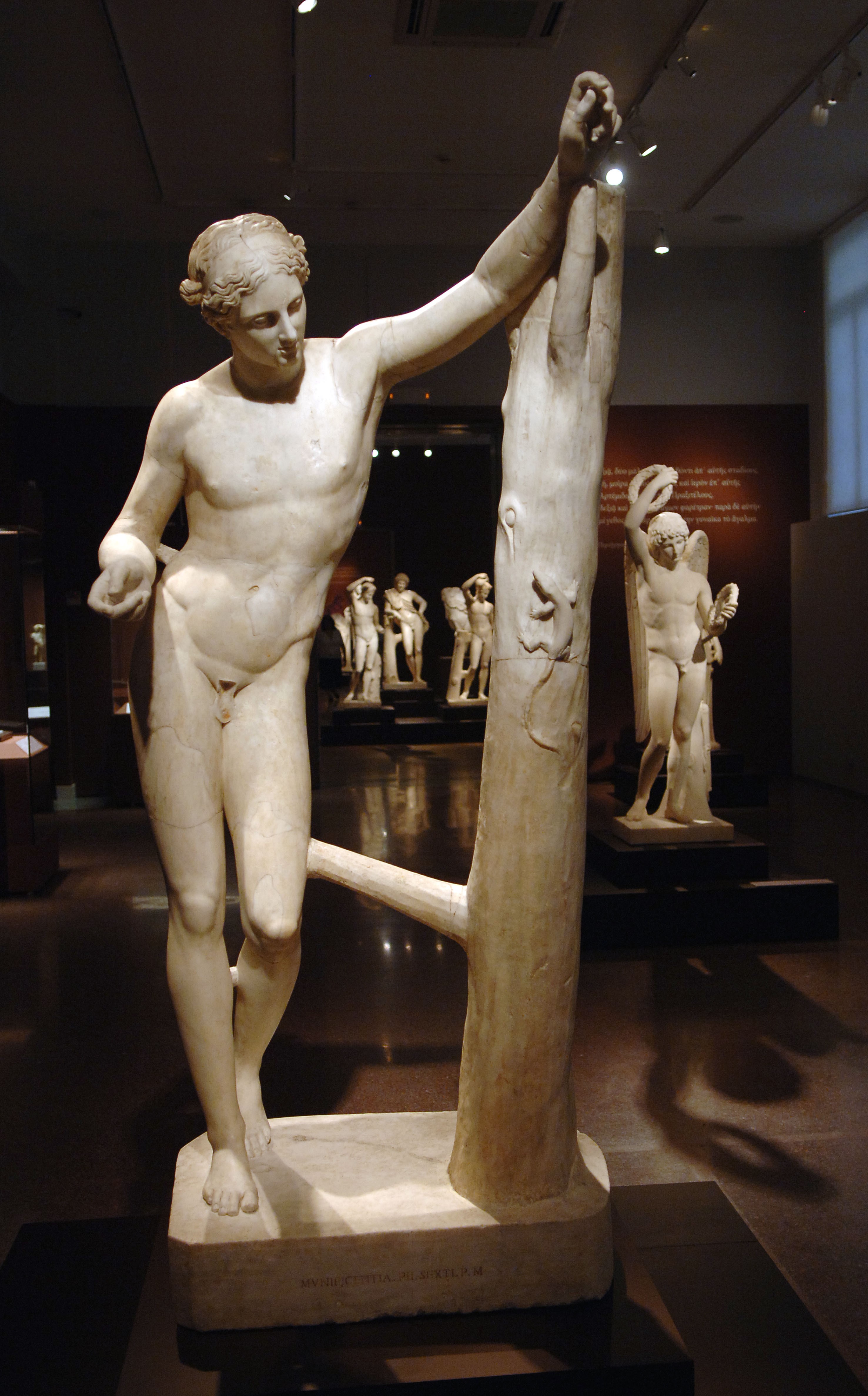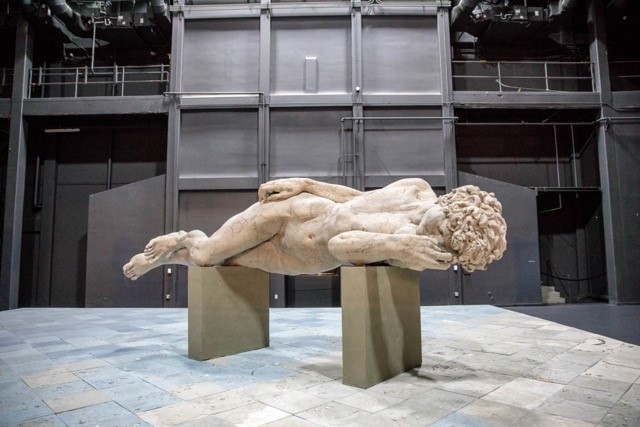Modern Classicisms in L.A.
Ruth Allen (Post-Doctoral Fellow in Modern Classicisms) posts about some of the latest Graeco-Roman resonances in Los Angeles…
Los Angeles is an unusual city in which to look for contemporary takes on classical art. It is far more concerned with the ‘now’ than with the ‘then’, its art and architecture more influenced by Spanish Colonialism, twentieth-century Modernism, and heavy industry than by European neoclassicism, more likely to look to the pre-Hispanic cultures of Latin America than to ancient Greece and Rome. And yet the classical is here, often evoked in playful and unexpected ways. During my time as a curatorial intern at the Getty Villa (from September 2017), I have been enjoying tracing its presence around the city. Here are just two of my current favourites – with two more to follow in a separate post.
Standing on the stairs at the Getty Center’s main entrance, Charles Ray’s Boy with Frog (2009) is a larger-than-lifesize painted fiberglass sculpture of a nude boy grasping a frog in one outstretched hand. The nudity, subject and pose all refer to the Apollo Sauroktonos, a famous Greek bronze, attributed to Praxiteles, that depicts the youthful god Apollo teasing a lizard with one of his arrows; the pristine white finish also recalls the appearance of classical marble. However, Ray’s engagement with his ancient model suggests ambivalence towards its perceived status as an icon of classical – and Western – art: the languid, seductive body of the original has been replaced with the awkward limbs of a pre-pubescent boy, the god’s divine indifference with impish malice, marble with fiberglass and steel. Even the lizard’s transformation into a warty frog pokes fun at Praxiteles’ sculpture: the original iconography perhaps alluded to Apollo’s conquest of the Python, here it is nothing more than a boy playing games.
At the city’s newest contemporary art museum, the Marciano Art Foundation, Adrian Villar Rojas’ current site-specific installation, Two Suns (II) (2015), presents a different ‘classical’ nude. Turned on its side, a seventeen-foot replica of Michelangelo’s David is laid out on two supports, floating above a cement floor embedded with detritus, including seashells, bike tyres and drinks cans. With his eyes closed and head buried in his arm, it is unclear whether this David is asleep or has in fact been defeated by Goliath. The sculpture is cracked and worn, and is presented as an archaeological discovery, or an anatomical specimen for dissection. As ruin, Rojas’s installation consequently undermines the dominance of Western art and culture in traditional art historical narratives, asking us to recalibrate our centre of reference.




